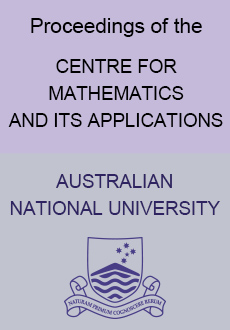Abstract
This article combines three components corresponding to real analysis, algebra and operator theory. A simple and universal way of finding a Hermite interpolation (quasi)polynomial and Gel'fond's formula covering both real and complex cases and based on the study of the sufficient conditions for the continuity of divided differences with respect to two types of the simultaneous convergence of nodes is presented. Relying on it, we establish both algebraic and topological Jordan decomposition for algebraic operators and algebraic and topological properties of their calculus, such as a constructive algebraic characterization of the solvability and an explicit estimate of the related a priori constant and a new characterization of bounded algebraic operators in terms of orbits. Further applications include explicit relations between the barycentric or uniform distributions on convex polyhedra and, correspondingly, $B$-splines or Steklov splines and short analytic proofs of some classical results from the polynomial arithmetics, wavelet theory and discrete Fourier transform. We also provide correct deffinitions, typical properties and representations for the holomorphic calculus of the closed operators with mixed spectra including both (double)sectorial and bounded components.
Information


